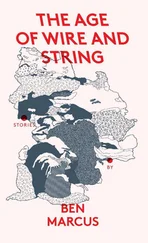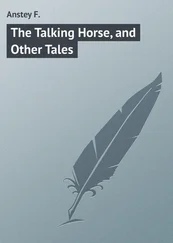A few brave souls get as far as the British line. One thrusts hard, musket flung out to the full stretch of his right arm, with all his weight behind it. His bayonet grazes the side of a front-rank man and jams deep in his pack. Before the Frenchman can recover it, the rear-rank man shoots him in the chest from such close range that his coat smoulders. Although the volleys are still quite regular and accurate, there are signs that this will not last; some men fire at threatening close-range targets as they present themselves, and others fire on the word of command; but, almost dazed by the noise and concussion, they seem to have little regard for where their shots are going.
The colonel’s voice and another drum-roll interrupt the firing. ‘Now, Thirty-Seventh, I am about to give the word to charge. Three cheers for the king.’ There are three harsh, barking cheers: on the word ‘Charge…bayonets’ the muskets come down to hip level, held across the body. Then the men are off down the slope, bounding over the dead and dying. There is a brief flurry of bayonet fighting where line meets the wreckage of the column, but most Frenchmen do not stay to meet the steel. A good number, huddling in a nervous clump, surrender. Most surrenders are accepted with good nature, but one man deliberately bayonets a Frenchman who offers no resistance but, stunned by the horror around him, is slow to drop his musket. The rest are away, running, free of musket and pack, and so much faster than their pursuers.
The colours move quickly down the slope, the pale ensign now wild with excitement, his sergeant, pike thrust out in front of them, again urging steadiness, but this time with a different cause. The action has had its tragedies, even for the victors. The king’s colour is now borne by a sergeant and back up the slope, in a thin tide-line of redcoated bodies, its fat-faced ensign lies flat on his back with a blue hole in his forehead and the back blown off his head. There will be a Gloucestershire vicarage for which Christmas will not be the same this year. The surgeon and his mate are busy bandaging and probing. Of the eighteen British wounded five, with bullet-wounds to the abdomen, are probably beyond hope. Three must have smashed limbs amputated, and are more likely to die than survive. The remaining ten have a variety of injuries – one unlucky fellow has had his jaw broken by the French colonel’s horse, kicking out in its death-throes as he rifled its saddlebags – but will live to fight another day.
At the foot of the slope the line rallies on the colours and the companies reform. Private Hobden, face and uniform smutty with powder-smoke, and mouth black with gunpowder from biting open his cartridges, pockets a gold watch and crucifix eased from a Frenchman’s pocket. He has also found a buckwheat pancake in someone’s discarded shako, and chews it quietly as he picks up his dressing, touching elbows to left and right, and squinting up to see the colours catching the first rays of sun to break through the smoke. 2
Seven years later, in April 1815, a few weeks before the battle of Waterloo, the Duke of Wellington was walking in a Brussels park with the radical diarist Thomas Creevey. Creevey asked the Duke how he thought the coming battle would go.
‘By God! I think Blücher and myself can do the thing.’
‘Do you calculate upon any desertion in Bonaparte’s army?’
‘Not a man, from the colonel to the private…We may pick up a marshal or two, perhaps, but not worth a damn.’
‘Do you reckon upon any support from the French king’s troops at Alost?’
‘Oh! Don’t mention such fellowsl No: I think Blücher and I can do the business.’
Just then a lone British infantryman appeared, walking about the park and gawping at the statues: Hobden, perhaps even Sergeant Hobden, although rather less scruffy then when we last met him.
‘There,’ said the Duke, pointing at the red-coated figure. ‘It all depends on that article there whether we do the business or not. Give me enough of it, and I am sure.’ 3
This book is about ‘that article there’, the redcoated soldier of the British regular army, like Ezekiel Hobden of the 37th Regiment. And it is about Hobden’s father and son as well, for my period opens with the start of the Seven Years’ War in 1756 and ends with the Indian Mutiny just over a century later. During it the British infantry-man wore a red coat in battle and carried the muzzle-loading flintlock musket known (though the first printed reference to the name is not found till 1785) as Brown Bess. This weapon had several variants. Most encountered today were mass-produced during the Napoleonic Wars, and are the India pattern, introduced into the British service in 1794 by large-scale cession from the East India Company when arms manufacturers, domestic and foreign, were unable to keep pace with the demands of war against Revolutionary France. 4The first Brown Besses appeared in the late 1730s, and the last were carried – although they were by then long obsolete – by some combatants in the Crimean War of 1854–56 and even the Indian Mutiny of 1857–58.
THE FRAMEWORK INTO WHICH Hobden’s army fitted was clear by 1760. It was to change little until the eve of the First World War, and its influence has persisted well into our own times. The army’s two main functions were twisted closely together like the strands of a rope. It had a continental role, which it exercised alongside allies and against opponents with both of whom, but for the colour of their coats, it often had much in common. With the continental commitment came a regard for formalism in drill and dress, and an emphasis on the scientific aspects of war like fortification, siegecraft and artillery. In its continental role the British army fought as part of a coalition: two of its greatest generals, Marlborough and Wellington, commanded more non-British than British troops in their biggest battles. But although the British sometimes tugged with a greater weight on the allied chain of command than their numerical contribution seemed to justify, there was no escaping the fact that theirs was a tiny army by the standards of continental war. In the late eighteenth century ‘His Sardinian Majesty could boast an army equal in size to that of King George I.’ 5
Into this was wound a colonial thread, in which practicality ranked higher than precedent, dress and discipline tended to be looser, and there were more raids and ambushes than pitched battles. Even when there was no colonial campaigning, the outposts of empire needed garrisoning. In the early eighteenth century several regiments served abroad for twenty-five unbroken years, and the unlucky 38 thRegiment spent 1716 to 1765 on the Leeward Islands in the Caribbean. A system of unit rotation was instituted in 1749, and although the demands of war interfered with its measured operation, it was at least a start. Yet it was not to prevent the 67 thRegiment from spending 1805–26 in India and then setting off in 1832 for Gibraltar, the West Indies and Canada, where it remained till 1841. Some foreign postings were more lethal than any battle: the 38 thRegiment lost 1,068 men, most of them to disease, in seven years in the West Indies, and during the 1740s even regiments in the relatively benign Gibraltar lost seventeen per cent of their strength each year.
The continental and colonial functions were never wholly distinct, any more than they were in the 1960s, when a unit serving in the British Army of the Rhine might find itself sent half a world away to fight an insurgent enemy in paddy-field or rubber plantation. Nor were the techniques and organisations of European and colonial campaigning always separate, as two brief examples show. First, the main impetus for raising light troops was colonial, but such soldiers had a useful part to play in Europe. Second, the export of European military techniques meant that both India and North America witnessed sieges and battles as formal as anything the British army encountered on the continent. Lastly, domestic tasks wove a third skein into the rope. The army had a crucial role in the preservation of public order, all the more so in the absence of an effective police force. It was also repeatedly involved in ‘coast duty’, assisting Revenue officers in their war on smuggling.
Читать дальше












